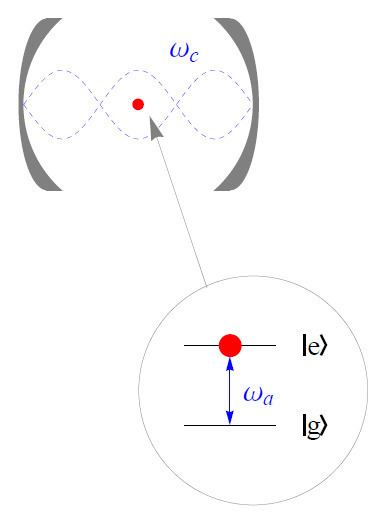 | ||
The Jaynes-Cummings-Hubbard (JCH) model is a many-body quantum system modeling the quantum phase transition of light. As the name suggests, the Jayne-Cummings-Hubbard model is a variant on the Jaynes–Cummings model; a one-dimensional JCH model consists of a chain of N coupled single-mode cavities, each with a two-level atom. Unlike in the competing Bose-Hubbard model, Jayne-Cummings-Hubbard dynamics depend on photonic and atomic degrees of freedom and hence require strong-coupling theory for treatment. One method for realizing an experimental model of the system uses circularly-linked superconducting qubits.
Contents
History
The JCH model was originally proposed in June 2006 in the context of Mott transitions for strongly interacting photons in coupled cavity arrays. A different interaction scheme was synchronically suggested, wherein four level atoms interacted with external fields, leading to polaritons with strongly correlated dynamics.
Properties
Using mean-field theory to predict the phase diagram of the JCH model, the JCH model should exhibit Mott insulator and superfluid phases.
Hamiltonian
The Hamiltonian of the JCH model is (
where
Defining the photonic and atomic excitation number operators as
Two-polariton bound states
The JCH Hamiltonian supports two-polariton bound states when the photon-atom interaction is sufficiently strong. In particular, the two polaritons associated with the bound states exhibit a strong correlation such that they stay close to each other in position space. This process is similar to the formation of a bound pair of repulsive bosonic atoms in an optical lattice.
